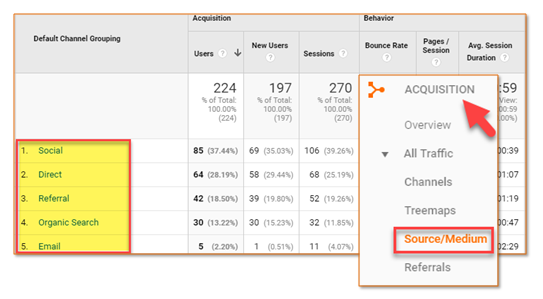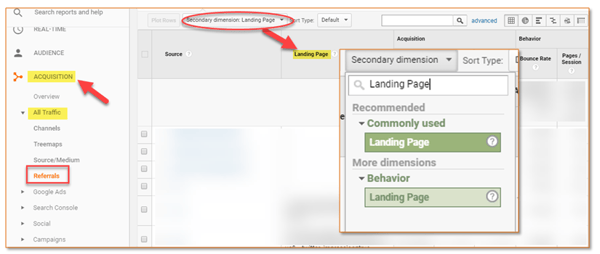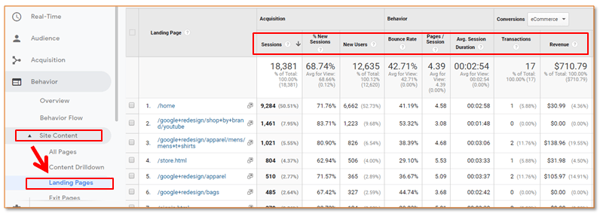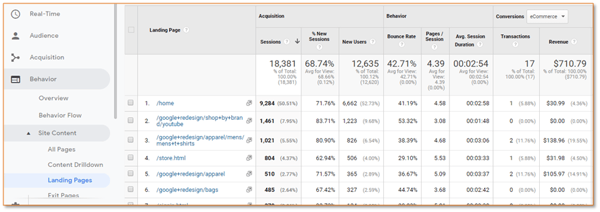The world of SEO has shifted to now focus on user intent rather than on specific keywords. As marketers this impacts us in both the way we create content, and in the way we measure and monitor its performance. With that in mind, content clusters are now the way of the future. With that in mind, here are 5 steps you need to create the ultimate content pillar piece.

In this post we will be looking at:
- What a Pillar Post is in a Topic Cluster
- The benefits of a Pillar Post
- The importance of understanding your audience's characteristics
- The significance of knowing your audience's pains, needs, and interests
- How to create a strong Pillar Post
- Tactics for promoting and getting views to your Pillar Content
- The need to constantly update your Pillar Post
- The importance of monitoring the performance of the Pillar Post
What is Pillar Content?
Pillar content is a larger, all-inclusive post that covers the general idea of a core topic. The pillar content mentions subtopics, which are linked together to show search engines you're providing value. These pieces should contain actionable information that your audience would search and solves a certain pain, need, or interest.
What Are The Benefits of Pillar Content?
Pillar content has a multitude of benefits not only for your audience, but for your website as well:
- Visitors spend more time on your page
- Bounce rates fall
- Excellent for generating backlinks and social engagement
- Able to continuously generate traffic throughout its lifetime
- Higher SERPs due to the word count, engagement, backlinks, authority, and positive reinforcement by Google (rankings will increase as you maintain and update your pillar posts.)
With that out of the way, let’s jump in and see what 5 steps are needed to create the perfect pillar post.
1 – Understand Your Audience
As is the case for every piece of content you create, content for your pillars needs to be value driven and focused on answering your audience’s pains, needs, or interests.
In order to do this, you should know your audience. (Sound like a no-brainer... but it's often neglected.) Use your analytics tools, list or customer databases, and social channels to understand more about your core audience, and refine your persona. Some questions you might want to focus on include:
- What is the average age of my audience?
- What type of content works best with my audience? (Video, text, infographics, etc.)
- Where are my audience members located geographically? Am I distributing my content when they're most active online?
- Where are my audience members located online? Am connecting with them on the right channels?
- What are my audience members biggest pains, needs, or interests? What are they searching the most? Does my content answer their questions?
- Are my audience business owners or do they work for a larger corporation?
The questions you ask can be refined to best address users that exist in your niche.
2 – Identify Your Audiences PNIs
You might have identified your audience, but you still need to finalize or refine your Persona. The final piece of the puzzle is to understand they core PNIs (or pains, needs, or interests.) What issues are on their minds?
Having a clear grasp on this will help you develop well rounded, quality driven topics for each one of your pillars. To do this, ask yourself a few core questions:
- Were you once a member of your target audience?
- Try to remember how you felt and what you thought about when you were a beginner in your industry. What questions did you have? Use these memories as the basis for your pillar articles, and share your insight; show your audience how you were once in their shoes, and how you managed to overcome their current obstacles. This will not only provide incredible insight to your audience, it will also make your content more personable and relatable.
- What is your audience talking about on social media?
- Social media are great for getting a better glimpse of what your audience is currently thinking, searching, or talking about. Read through your followers’ posts and take a look at which topics are being mentioned and which articles are being shared, liked, and commented on most frequently.
- What types of pillar content do other bloggers in your industry have?
- A peek over the shoulder to see what your competitors are doing can also go a long way. If you're having some trouble coming up with topics for your pillars, or if you wish to refine what you’ve already got, take a look at what other popular websites are creating. A great tool to help you do this is Buzzsumo. See what has resonated the most with their audience and if those pieces will translate well with yours.
- What kind of post format resonates the best with your audience?
- A while back we mentioned that different types of content resonate with different types of audiences. These can include How-to Guides, List-Based Posts, Statistic-Based Posts, Roundup Posts etc. Be sure to create a pillar in the format that is the best fit for your persona.
3 – Create Great Good Content
Pillar content needs to be highly driven by value; include answers to the broader topic while also giving attention to your subtopics. Your content needs to be compelling enough to not only keep the audience engaged, but encourage them to share and even convert on your site.
One important thing to remember here is that you don’t need to limit yourself to a massive blog post as your main pillar page, you can mix it up a bit. According to the CMO Council's report, there are a number of businesses that utilize multiple forms of content to drive traffic and leads. Once such example is Colleen Albiston, CMO of Deloitte in Canada.
According to the report, her marketing team creates infographics, motion graphics, social media communications and other content that reach a wider audience of decision makers and key influencers. This ultimately lead to a substantial increase in full report downloads and a two-fold increase in media impressions. The point here is, multiple forms of content can help achieve your online marketing objectives.
Regardless of the type of content you create, make sure it resonates with your audience. Ask yourself, "Does this answer the reader's PNI's?"
4 – Promote Your Pillar Articles Regularly
Even though you will have a multitude of subtopic posts linking back to the pillar page, it doesn’t mean that you should not put any distribution behind your core topic.
- Share the post on your social channels
- Send it to your current list
- Post it on relevant forums or FAQ sites such as Quora
- Consider quest posting
- Utilize Medium
For more insight on generating traffic for your post check out this article: 9 Content Distribution Channels To Reach Your Target Audience.
5 – Update Pillar Content Regularly
Contrary to what many content creators think, the story doesn’t end once the piece has been posted and distributed. As time and needs evolve, so should your content. Make it a point to upkeep your pillar posts on a regular basis. If there are new statistics out, new finding, new strategies, etc. be sure to make the appropriate changes to your content. This lets Google know your content is up to date and provides all the latest information for your audience.
A post that is frequently updated and maintained shows search engines that it is cared for and that its purpose is to provide valuable insight to its readers. Google really likes this and oftentimes rewards such behavior by boosting your SERPs.
Remember: In order to show Google that the post has been updated, be sure to also update the date on the post.
Monitoring the Performance of the Pillar Content
One of the best tools for monitoring your Pillar Post is Google Analytics. With this, you can monitor your post's overall health and performance. More specifically you can view the type of audience that are landing on your content piece, along with where they came from, how they found it, how long they stayed, and if they moved on to another post.
Finding Where Your Traffic is Coming From
Knowing where your traffic is coming from can help you fine-tune your marketing strategies. This is powerful information that you shouldn’t overlook.
Use Google Analytics to see which channels is currently performing the best and then narrow your focus on the specific source.

Discovering referral traffic also has many benefits. For one you discover a new distribution outlet. If someone is sharing your content, it means that they think their audience will find it useful. Knowing who is sharing what can be perfect for relationship building, link building, and ultimately increasing your authority, awareness, and leads.
On the other hand, this can also show you the kind of content that is being shared, and thus the kind of content you might want to create more of.

Sessions Per Post
For a broader picture of how your Pillar Post is working, you can sort Google Analytics by specific Landing Page where you can see overall performance for a specific time period. Note you can also compare a specific time frame to the next (i.e. month to month, week to week, etc.)

Bounce Rate
Bounce rate is another factor that can tell us a lot about a post's overall health.
If you see that pages have a particularly high bounce rate this can mean that visitors are not finding what they came looking for.
This is extremely important information as it may indicate that there might be a disconnect between the audience you think you are targeting (persona) and the audience you are actually targeting.
On the other hand, you might have the audience right, but the look and feel of the page and content is off.
There are numerous possibilities here, so testing is a must.

In all honesty, there are numerous other insights that can be gleamed from Google Analytics, these are only the "tip of the iceberg." If you are interested in finding out a bit more about this tool and its uses, let us know and we'll create a comprehensive guide in the near future.
Did you have any questions? Is there something you would like to add? Let us know!
As always be sure to check out the links below for more digital marketing insight
- 10 Common Content Marketing Mistakes & How to Solve Them
- Content Marketing Is Shifting In 2018: Here's What You Need To Know
- Revitalize Your Marketing Strategy With This 5 Step Content Audit


